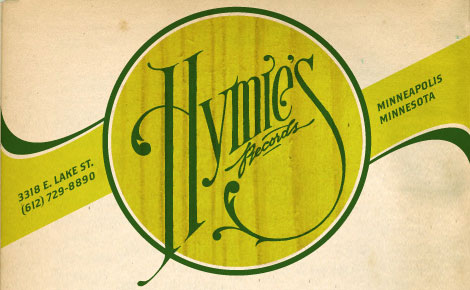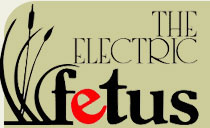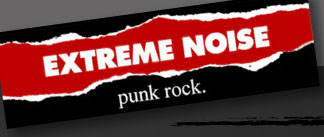MUSIC: Bought Any Good Records Lately?
Duluth music writer Chris Godsey investigates the quiet resurgence of vinyl among audiophiles and finds there may just be more to the trend than simple nostalgia.





BOB FUCHS SHOULD HOST A RADIO SHOW about music industry lifea podcast, at least. He’s manager of the Minneapolis Electric Fetus, where he’s worked for 22 years, since his early twenties. Doing that job, in a city of rarefied popular-music influence, gives him a privileged perspective on artists, labels, trends, and a lot of other stuff that most of us experience only through layers of remove. Fuchs doesn’t just work in the industry, he lives it, coming up with really cool micro and macro perspectives on the business off the top of his head. He seems to be one of those experts with the talent to situate his industry within the broader histories and cultures of its own time and place. His expertise has been tapped a lot recentlyby City Pages, Twin Cities Daily Planet, Minnesota Public Radio, KSTP, KARE, and other media outletsto commemorate both the Fetus’ 40th anniversary and the landmark store’s recent designation as one of the “U.S.’s 17 coolest record stores” by Paste magazine.
In a recent conversation about whether vinyl records are selling more now than in the last few years, Fuchs offered his uniquely sage insights into the trend. Vinyl is selling more, he says. He gives a few, almost superficial, reasons for the uptick in salesaudiophiles and DJs were buying it even after CDs became new music’s predominant format; hipster kids with retro-cool intentions have gotten interested; he mentions the warmer, richer sound always cited by vinyl proponents. And then he starts talking about how he feels, and not just what he knows.
“Records are more human in scale. CDs and iPods are so tiny. There’s something about the connection with music that comes from handling an album and putting it on a turntable,” he muses. “It’s the same feeling I get from making coffee at home. I can’t think of the word I’m trying to come up with; it’s not “ritual” or “ceremony” exactly, but it’s something like that. It’s about being more involved, more engaged. A record feels substantial.”
Industry folks like Justin Kervina, who’s been de facto manager of the Duluth Fetus basement vinyl room for three years or so, and Julie Wellman, co-owner of Hymie’s Vintage Records in Minneapolis agree with Fuchs’ assessment. They note that, from what they see in their stores, the people who grew up with records albums are still buying them, kids college-age and younger are discovering the tactile and aural joys of vinyl, and record sales are rising. Their experiences are corroborated by recent local and national news stories. In a July 3 Minneapolis Star Tribune story, business reporter Jackie Crosby reports that music industry numbers show that one million records sold last year15 percent more than the year before, and the most in three years. Similar reports have appeared recently in the Washington Times and on Chicago Public Radio’s Sound Opinions (show #138, broadcast on 21 July, available for download at www.soundopinions.org). In the Star Tribune piece, Crosby also mentions that Minnesota-based Best Buy Co. will sell records in an undisclosed number of its stores. (A difficult-to-discern number of titles from a variety of musical eras and genres are already available on vinyl at bestbuy.com.)
Fuchs says he’s been at the Fetus “long enough to see us carry almost 100 percent vinyl, see it almost disappear, then see it start to come back again.” He goes on, “we were down to 600 or 700 titles a couple years ago. LPs are still a niche market, but we’ve seen a 30 to 40 percent drop in CD sales in the last seven years or so, and that’s given us more room for vinyl again.” Both Fuchs and Kervina say they’re stocking more new-release vinyl than in recent years. “We’re up from two bins of new vinyl to four down here,” says Kervina. Off the top of his head, Fuchs mentions Portishead, the Black Keys, Fleet Foxes, Flight of the Conchords, Atmosphere, and Gnarls Barkley as examples of artists whose new work is being released on vinyl. Classic albums are also being re-released; a 30th anniversary vinyl edition of Billy Joel’s The Stranger CD was prominently displayed on the Duluth Fetus’s basement sales counter. Like many new records, the Joel re-issue included digital downloads 21 tracks from the album, plus a never-before-released 1977 Carnegie Hall concert.
Fuchs says some companies release the same new records on multiple qualities of vinyl, ranging from about $15 to $50. “One of our customers paid $50 apiece for eight different jazz albums,” he says. “It’s all about the target market. There’s still an audiophile-collector element who owns turntables that cost $2,000, $3,000, $5,000 or more.”
Fuchs, Kervina, and Wellman all say that most of their vinyl business is in buying and selling used records; and most of their growing vinyl sales come from young people and a core group of devotees who never stopped collecting records. Hymie’s stocks 95 percent vinyl, says Wellman, so record sales always dominate her business, but she’s observed that sales do seem to be rising, and the buying crowd is changing. Wellman, who’s worked at Hymie’s for 13 years, bought the store with Auralee Likes after founder James “Hymie” Peterson died in February 2000. “It’s funny,” she says, “as long as I’ve been here, people have said, ‘Vinyl is coming back!’ But I don’t remember ever seeing as many 13-, 14-, 15-year old kids as we’re seeing now.”
The folks at the Duluth Electric Fetus have noticed a similar trend. “Our clientele [for vinyl] runs the gamut,” says Kervina. “We’ve got a few customers who are in, pretty much, every day. Some people are looking for stuff recorded in a particular formatsometimes they’ll buy the same album in every version it’s available. There’s one guy who wants me to pull aside every Elvis record that comes in. Another guy wants anything done by certain obscure garage bands. But our biggest market is college kids. They’re buying a lot of Beatles, Led Zeppelin, Pink Floyd, Frank Zappa.” Wellman echoed Kervina: “We’re selling young people a lot of music in its original formatnot re-issues,” she says. “Beatles, Zeppelin, Bowie, some Miles Davis and John Coltrane.”
And the gender demographics for vinyl sales are shifting slightly, too. Fuchs says the male-to-female ratio of record buyers is still about three to one, but he’s “been shocked by how many women are buying: women under 25 and even under 20. It’s nice to see.”
All three record sellers said they listen to vinyl, too. They speculate that some young people may be attracted to the format because it offers a more soulful listening experience than buying and listening to music digitally. “Vinyl just has that interesting sound,” says Kervina, echoing similar thoughts by Fuchs and Wellman. “It’s got a low end that can’t be duplicated digitally. I never download my records to MP3s. They just don’t transfer well. I use a lower-end turntable till it breaks, then I fix or replace it. (At the risk of sounding ancient, I have to say that old, simple turntables seem more solid than new ones.)” And, Kervina admits, “there’s also some nostalgia to records. I’m old enough [28] to remember my mom and dad’s record collection.”
Wellman says engagement and substance are present not only in playing records, but in selling them, too. “There’s so much cool original-format music,” she says. “We take care of it and organize it. We don’t buy anything new. We bought tons of collections when we started, and people bring in stuff daily, so we have a basement warehouse to draw from. We were recycling and reusing long before it was cool to do it. “
“Half of the people who buy music will never care if they have artwork or a physical object to go along with it,” Fuch says. Those people will be content with digital downloads. “For the folks who do want something physical,” he says, “we still sell more CDs.”
But that’s changing, he says, and the retro-artistic appeal of the album is coming back: “An increasing number of people want vinyl.”
About the author: Chris Godsey writes and lives in Duluth.